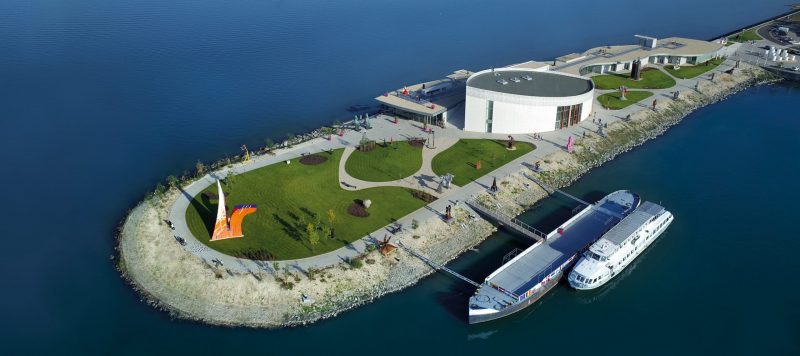Iconic buildings of Bratislava
Reversed pyramid, ufo shaped restaurant hanging above a bridge and much more
The triangular Prior department store on Kamenné Square was once the largest department store in Czechoslovakia. Its opening in 1968 caused a real sensation. Together with the hotel, with which it forms one whole, many appreciate the unifying panelling of white Spiš travertine as well as the use of the technical novelties of that time. It featured the first escalators in Slovakia, a carillon and large aluminium shop windows.
This iconic complex by architect Ivan Matušík is just one of the valuable buildings that architecture lovers should not miss on a walk around Bratislava.
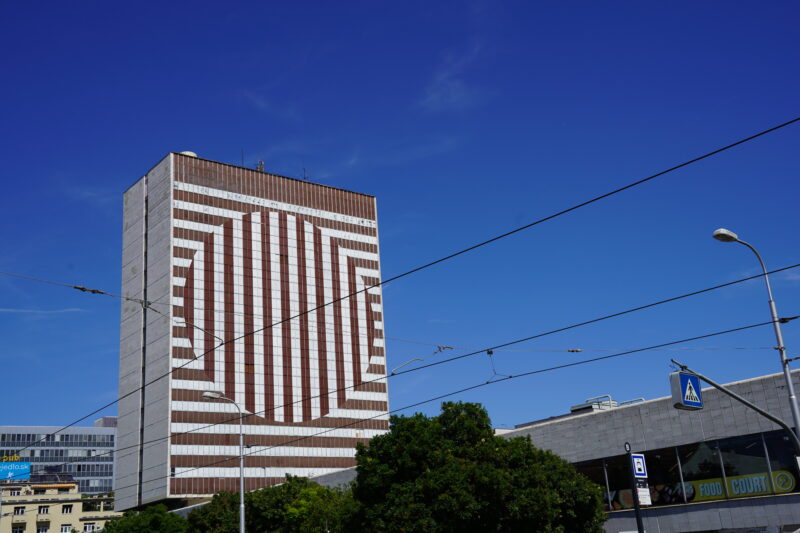
Another technical unrivalled construction is the SNP Bridge built in the years 1969 – 1972. Thanks to the UFO-shaped restaurant with an observation platform on the top of the structure, it is one of the most popular attractions of the city. Holders of the Bratislava CARD can get to it by lift for free and also have free public transport. The bridge has retained its exceptional status to this day as it is the only cable-supported bridge in Bratislava; it has no pillars in the river.
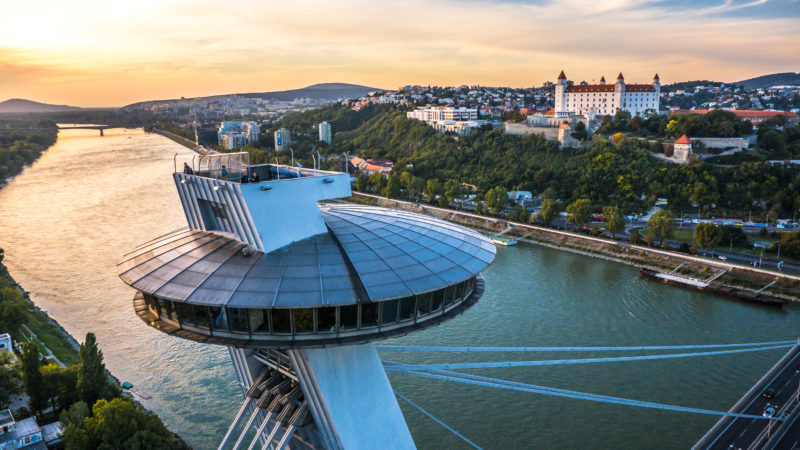
The inverted pyramid of the Slovak Radio building by architects Štefan Svetko, Štefan Ďurkovič and Barnabáš Kissling is another technically and visually interesting building. Although the public associates it with the communist totalitarian regime, it is actually a remnant of the political thaw in the 1960s.
Inside, there is another, inner pyramid that houses the most sensitive radio operations – broadcasting and recording studios. However, this venue’s rare concert halls and inner atrium are what attract world-renowned architects.
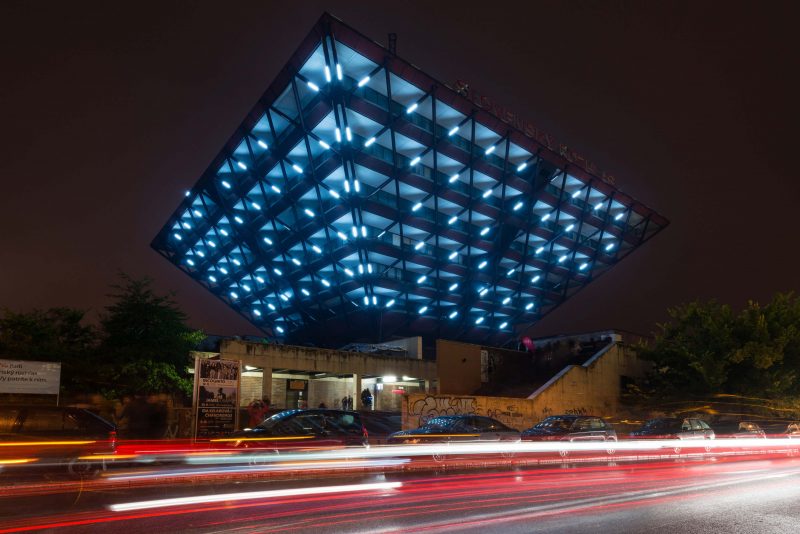
National Gallery and villas in Slavín
An award-winning building from this period is also the extension of the Slovak National Gallery by architect Vladimír Dedeček known as bridging. Although part of the lay public is still adjusting to this levitating sculptural construction, for others it is one of the most significant acts of late modernism in Slovakia.
The crematorium in Lamač is an exceptional piece of architecture too. In fact, it is the very first post-war building that has been declared a national cultural monument in Slovakia. This most important work of architect Ferdinand Milučký is appreciated for the harmony of its architecture with the surrounding forest.
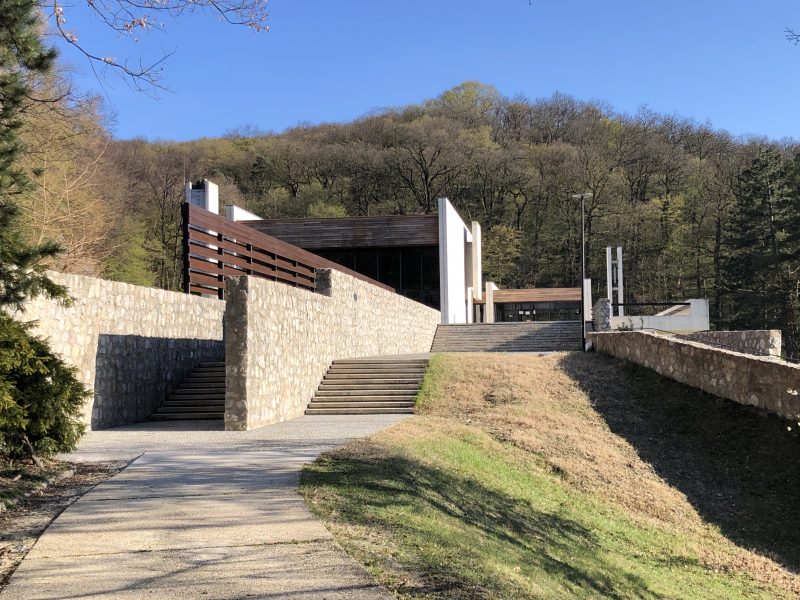
During walks through the winding steep streets of the residential area of Palisády above the castle, visitors can admire villas of various styles – from romanticism, through historical styles to the most contemporary. The villa, fit with an ornamental façade designed by architect Juraj Tvarožek, on Tvarožková Street, the fairy-tale Zsigárdy villa on Francúzskych Partizánov Street and the Art Nouveau apartment building on Palisády are all well worth a visit.
Bratislava skyscrapers
Also noteworthy is the military hostel Hviezda, better known as Kukurica (Cob), on Jarošova Street on the edge of the wider city centre. Created by architects Ján Strcula and Cyril Sirotný, this structure is not only one of the first high-rise buildings in Bratislava, but also turns heads with its circular floor plan.
However, if you want to see the first skyscraper in the city, you should go to SNP Square in the city centre. Here, the 45-metre-high Manderla Department Store and Residential House have stood since 1935. It was built by the successful butcher Rudolf Manderla, who set up a butcher shop on its ground floor.
Contemporary architecture
Since the fall of the communist regime in 1989, Bratislava has been experiencing a construction boom which has resulted in the creation of completely new neighbourhoods combining residential, office and commercial space such as Eurovea and River Park on the Danube embankment and Sky Park with its elliptical residential towers. The latter was designed by the British architectural studio of the prominent architect Zaha Hadid.
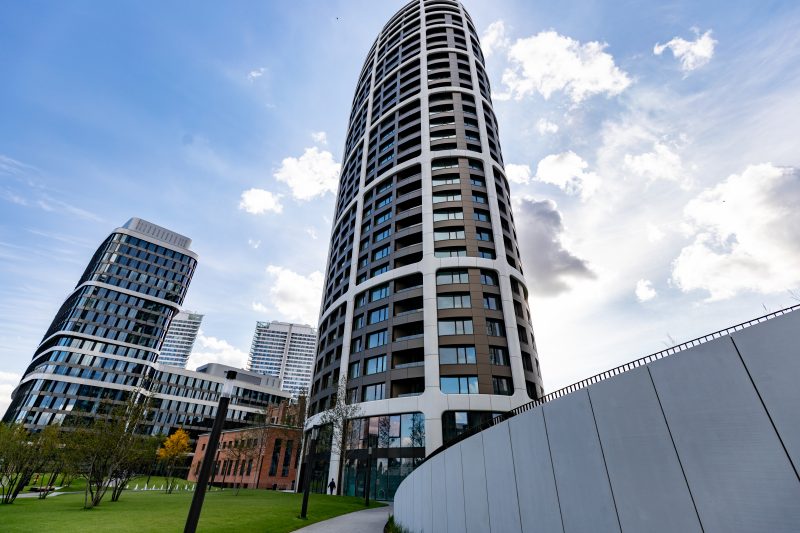
For good architecture, it pays to go to the outskirts of the city. For example, the Danubiana Meulensteen Art Museum is located on an artificial peninsula in the middle of the Danube near Čunovo. Lovers of fine arts and architecture will find something to their liking here.
